
Archaeology in the early 20th century was still in its developmental stages. Archaeologists just after the turn of the 19th to 20th century were still very much interested in finding treasures or acquisitions for large museums in the United States and Europe.
And few of their methods for acquisition fit into what we might consider ethical standards today: excavations were rushed, some even facilitated with the use of dynamite; often, little regard was given to context or subtle aspects of sites like pollen, phytoliths, soil stains, etc–floatation as a method to obtain light organic materials like pollens and seeds was ridiculed well into the 1970s (“marble doesn’t float!”); and backroom deals between archaeologists and local officials ensured that objects like the Nefertiti bust ended up in the hands of Western museums.
That said, there are still a number of very significant finds that are, even today, considered extremely important. I’m sharing five such sites and discoveries here, but keep in mind: this list is by no means exhaustive or even the TOP five. It’s just five that immediately come to mind for me.
1. 1900 – The Discovery of the Minoan Civilization
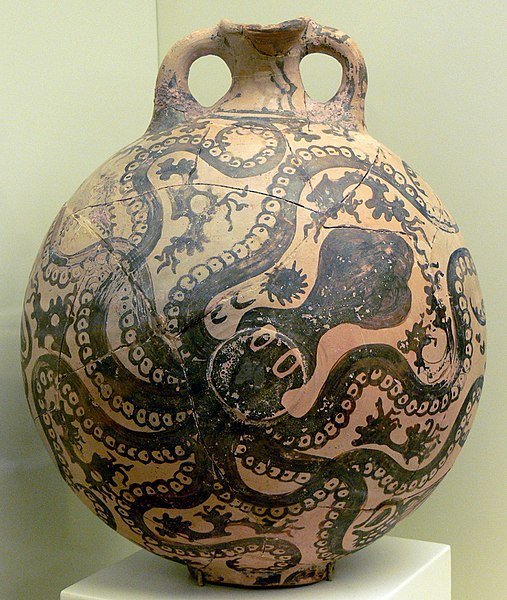
by Wolfgang Sauber.
This story really begins in the late 19th century with Sir Arthur Evans. After his wife’s death in 1894, Evans decided to visit Crete for the first time. Where he ended up buying land at Knossos. At first, he only bought a portion of Kephala Hill in 1895. But in 1899, after Crete gained independence from Turkey, Evans purchased the rest of the Knossos site. He and David Hogarth began excavating in 1900.
Evans reckoned that Neolithic people first arrived at Knossos around 8,000 BCE, probably by boat, and probably creating buildings first of wattle and daub. Modern radiocarbon dates place the earliest occupation of Knossos at around 7,000-6,500 BCE, so he was pretty close in his early estimates.
During those first excavations, Evans discovered the Minoans. The plan of the palace at Knossos was laid out along with what Evans described as a throne room and magazines (storerooms). Over time, he uncovered many frescos, pottery, and burials. Minoan art is very distinctive and often evokes images related to the sea with octopuses, fish, an fishing, though bull imagery and bull-leaping are also a thing with the Minoans.
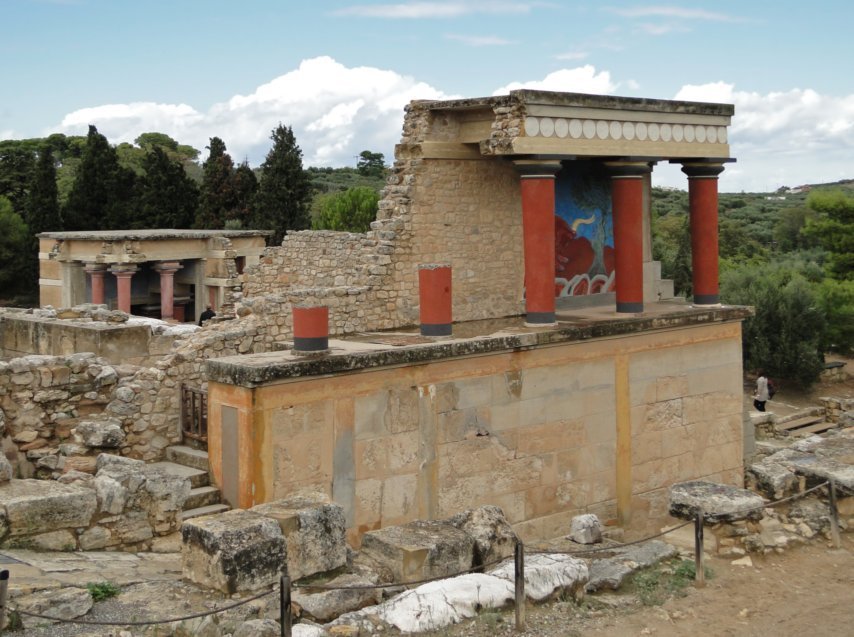
Bernard Gagnon, CC BY-SA 3.0
Eventually, Evans recreated the palace itself–what he intended as a true representation based on archaeological evidence. However, some are skeptical of its representational veracity, claiming it has influences of modern, 1920s art deco style. Still, others see it as an accurate facsimile. The reality is that it’s probably something in between.
Still, Evans did find in his excavations two tablets of great importance: the Linear A and Linear B tablets. Evans believed that the latter was a derivative script of the former, thus their sequential names. The Linear B tablet has been deciphered (by Michael Ventris in the 1950s), but the Linear A tablet has not.
2. 1906 – The Discovery of the Hittites
Already known through Biblical mythology and legend, the Hittites were discovered to be a genuine civilization with the excavation of the Hittite capital, Hattusa (Boghazkoy in modern Turkey). Excavations of Hattusa happened between 1906 and 1931.
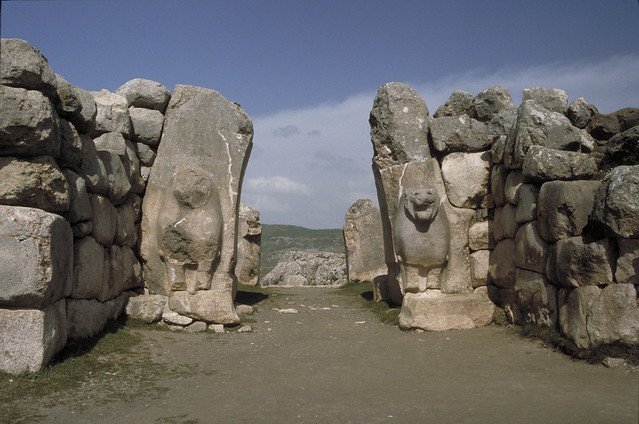
The Hattusa excavation was run by Hugo Winckler and he discovered more than 10,000 tablets inscribed with cuneiform Akkadian but in an unknown language. An unknown language that matched a set of two letters previously discovered in 1887 during excavations in Amarna in Egypt. All that was known until then was that they were letters from the “kingdom of Kheta,” and that Kheta was located in the region of Mesopotamia known to 18th Dynasty Egyptians as the “land of Hatti.“
Other Hittite sites were also excavated soon after and, by the early 1940s, a wealth of material remains allowed archaeologists and linguists to discover and decipher their written language. Since about 1907, the German Archaeological Institute has continued excavations at Hattusa (Boghazkoy, Turkey).
3. 1911 – The Discovery of Machu Picchu

a mule, ~ 1911.
In 1911 Hiram Bingham (1875-1956) led an expedition in Peru that came across what he called “The Lost City of the Incas.” News of the discovery spread like wildfire at a time when the fastest method of communication was the telegraph and the early telephone. News papers covered it far and wide as the “Yale men” returned with their news of finding a “lost city.”
Of course, Bingham didn’t discover Machu Picchu, but he did effectively re-discover it. While lecturing on Latin American history at Yale, Bingham married a wealthy heiress and this is, perhaps, how he was able to fund his expedition after coming across mentions of a “secret capital” of the Incas where they based a campaign of resistance against the Spanish conquest in the 15th century.
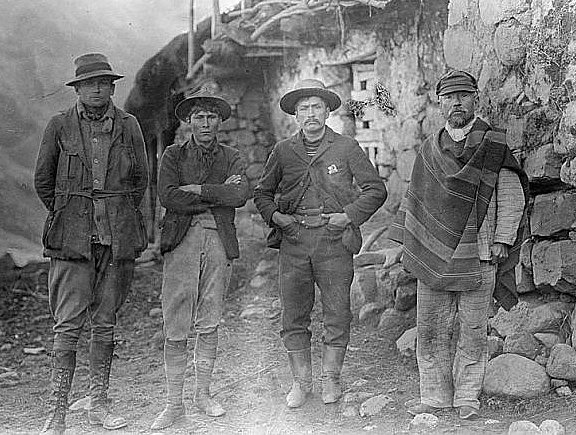
Considered to be the last in a long line of American adventurers, Bingham might not have even discovered the ruins of Machu Picchu had he not agreed to a brief side-trip up a nearby hill from the camp they were preparing to break on the 24th of July 1911. A local farmer, Melchor Arteaga, told Bingham of the ruins and he reluctantly agreed to make a mid-day journey to check it out.
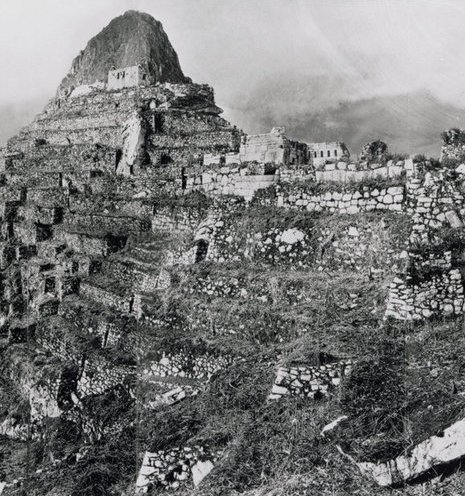
Machu Picchu in 1911 
Tourism photo of Machu Picchu today
Today, Machu Picchu is one of the most visited archaeological sites in South America if not the world. It may not be the actual “lost city of the Incas,” and it isn’t the capital Bingham was searching for, but it is believed to be the estate for Inca emperor Pachacuti, built around 1450 CE and abandoned by the time the Spanish began their conquest nearly 100 years later.
4. 1922 – The Discovery of Tutankhamen’s Tomb
Lord Carnarvon, a wealthy British antiquarian hired Howard Carter in 1909 to find something cool to excavate in Egypt. Carter began his career in archaeology working for Sir William Flinders Petrie and had a decade of experience by this time.

entrance to Tutankhamen’s tomb. Photo by Harry Burton, public domain.
World War I put a bit of a damper on things, so Carnarvon and Carter were getting a little frustrated. They agreed that if nothing cool was found by 1922, they’d call it quits by the end of the year.
As luck would have it, Carnarvon received a telegram from Carter in November: “At last have made a cool discovery… the coolest of tombs with seals intact… recovered same for your arrival.” [substitute the words “wonderful” and “magnificent” for both instances of “cool” and you have it word-for-word].
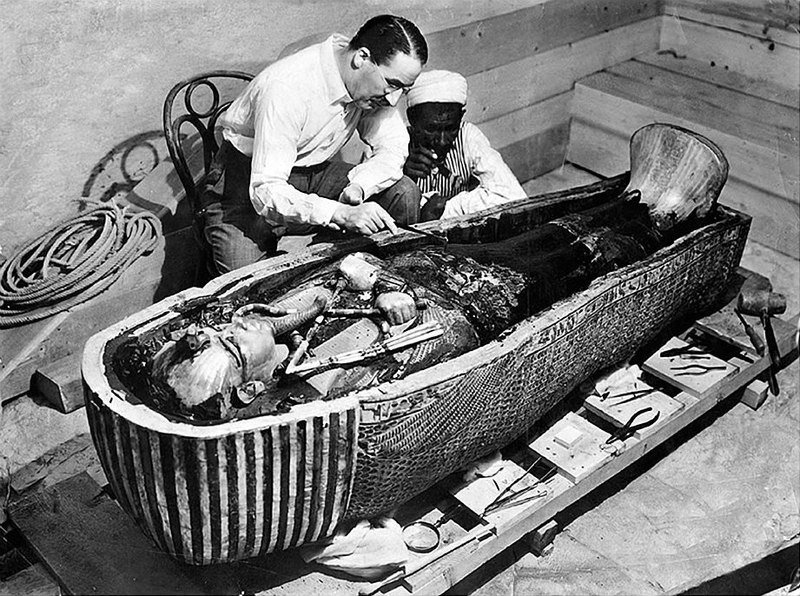
public domain.
The pair created a media frenzy and staged a grandiose spectacle of a tomb opening where they broke the seals and shined a light inside to describe all the “wonderful things!” Most scholars have little doubt that the pair already went inside the night before and re-sealed and re-set the tomb for the media the next day. Even without modern social media and satellite television, the media spectacle was effective. And Egyptologists have tried off-and-on over the years to duplicate it–most notably Zahi Hawass with live presentations on television.
This was certainly an important find for many reasons. For the media, the importance of the tomb was the riches it contained–the treasure! Gold and fine burial goods. For Carnarvon, the importance was the possibility of enhancing his personal collections. But for Carter and the archaeological community, this was an opportunity for two things: 1) obtain real information from an undisturbed burial of an Egyptian ruler from a crucial period in time (1336-1327 BCE); and 2) a way to show the world how archaeology of the 20th century is nothing like its 19th century forerunner. Gone are the days of looting and tomb-robbing in spite of Carnarvon’s ambitions. Or so was the hope.
5. 1926 – The Discovery of the Olmec Civilization
The word “Olmec” has been around at least since the 16th century and it’s the name the Aztec gave to the “people of the land of rubber” living along the Gulf of Mexico where rubber trees are native species. Around the middle of the 19th century, the term “Olmec” began to be used in connection with the large sculpted stone heads of Tabasco and Veracruz, two states in South Mexico.

But it was in 1926 that archaeologists Frans Blom and Oliver La Farge, working at the sites of La Venta and Tres Zapotes, began finding more of these huge heads. La Venta even had a pyramid. From here, the evidence for a distinct culture, being referred to as the Olmec, kept showing up at these sites as well as Cerro de las Mesas, San Lorenzo, and even Tlatilco just outside of modern Mexico City. By 1943, evidence for the Olmec culture was found as far north as Michoacan and as far south as Costa Rica.
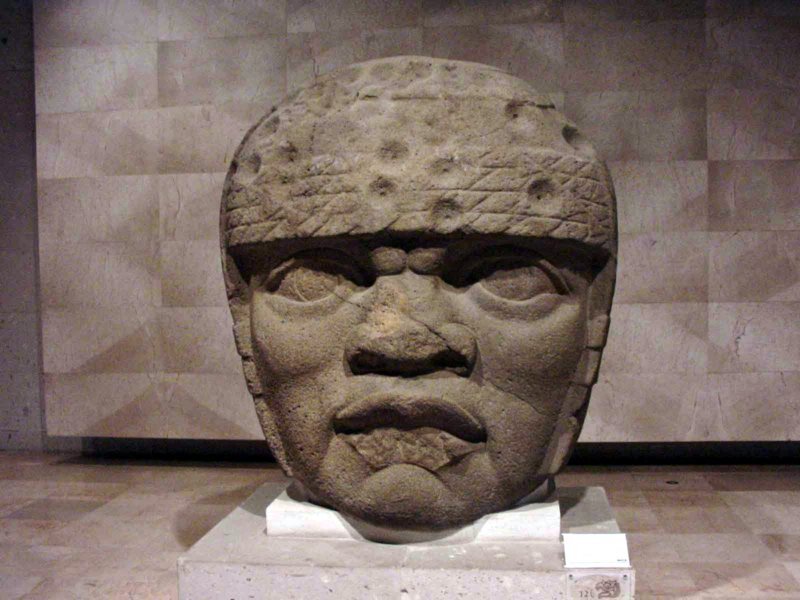
Photo by Maribel Ponce, CC BY 2.0
The advent of radiocarbon dating techniques finally allowed archaeologists to show the Olmec to be a mother culture of a region in the Americas that had become known as Mesoamerica. The culture peaked at between 1200 and 400 BCE, making the Olmec culture one that was contemporary with the New Kingdom of Egypt, the Dark Age of Greece, and–later–the first Olympic Games of Greece.
It seems likely that the later Mesoamerican cosmology, worldviews, and socio-political organizations of the Maya, Aztec, and others have their roots in Olmec culture. There is even an early hieroglyphic script called Epi-Olmec that shows up about 400 years before full-fledged writing at La Venta.
*******************************************
That’s my five discoveries of the early 20th century that I think were of great importance. There are definitely some others though. Comment below with the sites or discoveries you feel are of equal or greater importance to these.
I am extremely interested in archeology,so pleplease keep me posted on new discoveries via via email.
Good article, Carl: just to toss out an idea, since you are interested in the Archaeological finds/claims that are bogus, how about an article about the Top 10 most bogus Archaeological finds of the past 2 centuries? Seemingly there would be a lot to choose from, from the Kinderhook Plates all the way to Piltdown man….
Im back from a long contract. But I hope people here will accept that historians have got things very wrong !!!!!!!!!!!!!!!!!!!!
I think most rational people are happy to acknowledge that historians are sometimes wrong. Pretty much the same people who are happy to acknowledge that pseudoscientists are pretty much always wrong unless they are piggybacking on the work of a historian or archaeologist who has it right.
..historians, archaeologists, etc., all get things wrong, that’s for sure. The only time that really becomes an issue, is when a person in one of those fields has a hard time admitting it, or, as happens most of the time, finds a way to gently sweep the error under the rug, hoping no one will notice….
Oh yeah, a quick look at the various debates that rage in academic journals and on online forums devoted to these fields on pretty much a regular basis prove that people in those field are all about quietly sweeping things under the rug. Oh yes indeedy. Ditto for historians or any given field that Hancock supporters are sore at this week for calling out his BS.
Might want to do a little damage control over on the Hancock book review discussion. I’ve never heard of the physics journals that were mentioned and took some time to figure out the zinger. But apparently the electricity experts here aren’t subscribers either.
James Ford: …now, now, James, did you miss your “drug research” session over the weekend? LOL…
Actually, I went on a two day drunk and liquor store robbing spree. Nothing in the news though because my co-conspirators in my field quietly swept it under the rug. We are Borg…..
..so James, just a routine weekend in your “neck” of the woods?
Well, I can pretty much make a routine out of anything since I have all my fellow anthropologists to sweep my misdeeds under the rug. I would hope that you spent a more productive weekend. Perhaps reading thru the commentary section of back issues of American Anthropologist. Maybe even doing a bit more background reading in your own area of alleged expertise. Give that a try for a couple weekends then we can get back together and compare notes on our respective activities.
James Ford: you’ll be happy to know that, spurred by Hancock’s description, I visited the Great Serpent Mound in Ohio back in June, along with my family. So you see, if Graham Hancock’s writings can create that sort of interest, surely he can’t be as bad as you make him out to be, right?
Well, I know plenty of people who have visited that site who heard about it without spending $29.95 on a copy of hancock’s drug-induced ramblings and/or without having to wade thru mounds of his drug-induced ramblings posted on the internet or youtube. A two minute google search for interesting prehistoric sites in the Midwest or checking out the brochures for prehistoric sites in the Midwest at any given prehistoric site in the Midwest suffices for most people. I doubt that the good people at Serpent Mound feel that a couple extra visitors, at best, on any given weekend compensate for the utter demonstrable BS about North American prehistory that Hancock peddles to the hoopleheads. What’s next, stating that Nazi Holocaust deniers inspired you to visit Auschwitz and so those folks have inherent worth?
Best just go back to getting caught up on about 50 years of readings in Physics Letters or whatever those journals are that indicate that you don’t have a good handle on your own perceived expertise.
Now really, it’s over. Better luck next time. In the words of Dieter from Sprockets, you have grown tiresome and as boring as being alive….
Really, James, Nazi references now? Do you think maybe, just maybe , you take yourself and your opinions just a tad too seriously? Or maybe your tin foil hat is on a little tight? I don’t have, and never claimed a “perceived expertise” in anything, and certainly not in archaeology, but then again, you don’t either…
One problem with having sites visited by people who are invested in the same conspiracy fantasies as Mr. Hancock and others is that you have no idea how they will conduct themselves. It was not long ago that the Great pyramid was damaged; supposedly by fans of Mr. Bauval who decided that something was being concealed and so they tried to conduct their own amateur investigation. Other fringe researchers have been accused of problematic conduct in terms of taking unauthorized samples or making unnecessary contact with sensitive materials. This has been a charge made against Scot Wolter on multiple occasions. American sites have enough problems with vandalism and looting. They don’t need the added burden of dealing with people who have their mind made up that additional revealing information is there and they are going to be the ones to expose it at any cost. And thus they may go to sites specifically mentioned by Mr. Hancock with that intent. I’m not in complete agreement with the Nazi analogy, but given the frequent conduct by supporters of people like Mr. Hancock that approaches fanaticism (see, for example, comments by some of Mr. Hancock’s supporters on Reddit) I can understand why someone might feel compelled to make this type of comparison.
So the alleged damage caused “supposedly by fans of Mr. Bauval”, true or false? Can you prove that? And you must be a complete moron if you agree with any part of the Nazi comparison, but then again, like someone once said, the first person to play the “Nazi card” is usually an excellent sign someone is losing the argument. So, let’s see the evidence for your assertions, and please don’t tell us you have a friend of a friend who saw a Youtube video and that you consider that “evidence”. But, like many others here, you’re probably in over your head….
Interestingly enough, I wrote about this a few years ago: https://ahotcupofjoe.net/2013/12/not-archaeologists-vandals/
If they did what they claimed to do, they cause irreparable damage by removing pigment from an area of the pyramid restricted to visitors.
Carl: were those fellows supporters of Bauval and Hancock as the prior poster asserted? What damage did they cause? If they caused damage to monument, were they charged in a court of law? Where and by whom?
..it appears, Carl being among them, we have some “pseudo-lawyers” on this thread…:)….
The vandalism really happened and resulted in a major outcry. See:
https://www.npr.org/sections/thetwo-way/2014/02/20/280272270/men-who-vandalized-egyptian-pyramid-to-prove-theory-face-charges
The specific link to Bauval is unclear. However, he has been accused of at least condoning the act if not inspiring it. See:
http://www.robertschoch.net/Khufu%20Cheops%20Giza%20Relieving%20Chambers%20Colette%20Dowell.htm#Das Cheops Title
Gorlitz and Erdmann have tried too walk back their culpability although they had originally apologized and offered compensation to the Egyptian government. See clip which even mentions Bauval:
https://www.youtube.com/watch?v=rrAx8QNDzPs&vl=en
The latest news on the incident. The Germans sentenced in absentia and a number of Egyptian nationals punished. The Egyptian government attributed the vandalism to the general influence of pseudo-scholars who claim the pyramid is much older and assert conspiracies to hide this. Bauval and Von Daniken being the fringe-scholars most associated with the incident by name, although all such writers bear some responsibility for promoting such idiocy.
https://www.egypttoday.com/Article/1/4267/12-Egypt-officials-guards-to-be-tried-over-German-sabotage
Herr/Fraulein Ramstein,
As an interesting sidenote, not long ago Zawi Hawass was supposed to debate Graham Hancock. Just before the debate began, Hawass threw a fit and refused to participate. The fringe groupies sometimes try to spin this as Hawass getting cold feet and backing out. Turns out that Hawass lost it because he saw that Hancock was going to use some of Bauval’s crap research in his side of things and Hawass believed that Bauval had directly inspired or even encouraged the damage of the pyramid. That’s what is supposed to have set Hawass off.
Coptic:
The connection between pseudoscientists like Hancock and Nazi types is probably more substantive than any of his wacky theories. Hancock, like many such writers was up until recently pretty big on the notion of white or non-natives as representing the ancient lost civilization. These types of assertions are sometimes used as ammunition by white supremacist groups who are big on the notion of whites as the original inhabitants of the land. Less an issue of these fringe writers as being white supremacists, although some of them probably are, as it is of them shamelessly peddling nonsense that they damn well know could be put to use as propaganda. All these fringe writers borrow from one another, or from earlier writers who were quite obviously racist. So, there is room for both individual and collective blame here, although Hancock is totally blameless because we all know that he is just asking questions LOL. Always wise to pay VERY close attention to what their apologists say as well. Sometimes you can pick up a hint or two among some of them as well.
http://www.jasoncolavito.com/blog/graham-hancock-announces-plans-to-investigate-mound-builder-myth-search-for-lost-white-race-in-america